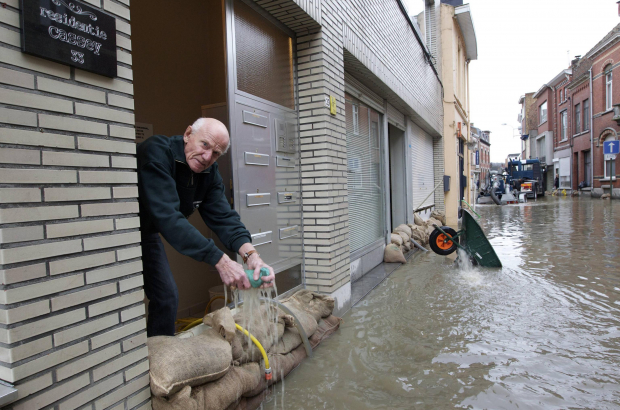- Daily & Weekly newsletters
- Buy & download The Bulletin
- Comment on our articles
Projections of sea level rises show Flanders underwater
Projections of sea level rises over the next 10,000 years by glaciologist Jonas Van Breedam at the VUB show that Flanders, and some regions of Germany, the Netherlands and Denmark will one day be under water.
The amount of greenhouse gases emitted over the next 30 to 200 years could lead to an average sea level rise of 9 to 37 metres. In this case, Flanders will be almost completely below sea level, and even the Senne valley and the Brussels canal zone will be flooded.
Van Breedam’s projections, made as part of his PhD, are based on several climate scenarios that range from a peak in CO2 over the next 30 years to the emission of most CO2 reserves in the next 200 years. The most extreme scenario also takes into account an increased greenhouse effect associated with melting permafrost, which would release methane in large quantities.
Depending on greenhouse gas emissions, sea levels would rise between 9.2 and 37.4 metres, according to the glaciologist. The Greenland ice sheet would disappear completely in all cases, while the Arctic ice sheet would remain intact in a low-emission scenario. In a higher emissions scenario, it could lose half its mass.
"In the highest emission scenario, we assume that all fossil fuels on earth will be consumed within 200 years,” says Van Breedam. “In the low emission scenario, we start from the point where there will be no more CO2 emissions within 30 years."
The most extreme scenario still predicts that sea level will rise by an average of one metre per century over the next 2,000 years. In the less pessimistic scenario, the rate of rise would be 10 times lower over the same period, at 11 centimetres per century. The rate of sea level rise will therefore depend heavily on CO2 emissions.
"This study shows that we will continue to see the effect of current global warming on sea levels for thousands of years,” the glaciologist says. “If we do not quickly reduce CO2 emissions to zero, Flanders, with the exception of a small part of Limburg, will be completely below sea level."
"Fortunately, Brussels is still relatively high but, in the scenario where sea levels rise more than 10 metres, the water will mainly flood the western, lower part of Brussels,” he added. “For example, the Senne valley and the Brussels canal zone would be most at risk."
"Depending on what scenario we follow, we can calculate when the water will reach Brussels," says Van Breedam. "In the low emission scenario, sea level levels will only rise by almost 10 meters within about 10,000 years. But in the high-emission scenario, part of Brussels could be underwater within 1,000 years.
"For example, the canal zone is about 10 to 20 metres above the average sea level. Certain parts of Molenbeek and Anderlecht quickly move to 15 or 20 metres above sea level, but in the case of storm tides parts of the canal zone may be susceptible to flooding. Of course, this is only the case if we do not find other solutions, such as building dikes inland."
The only way to slow down the process of rising sea levels is to stop CO2 emissions as soon as possible, says Van Breedam.



















